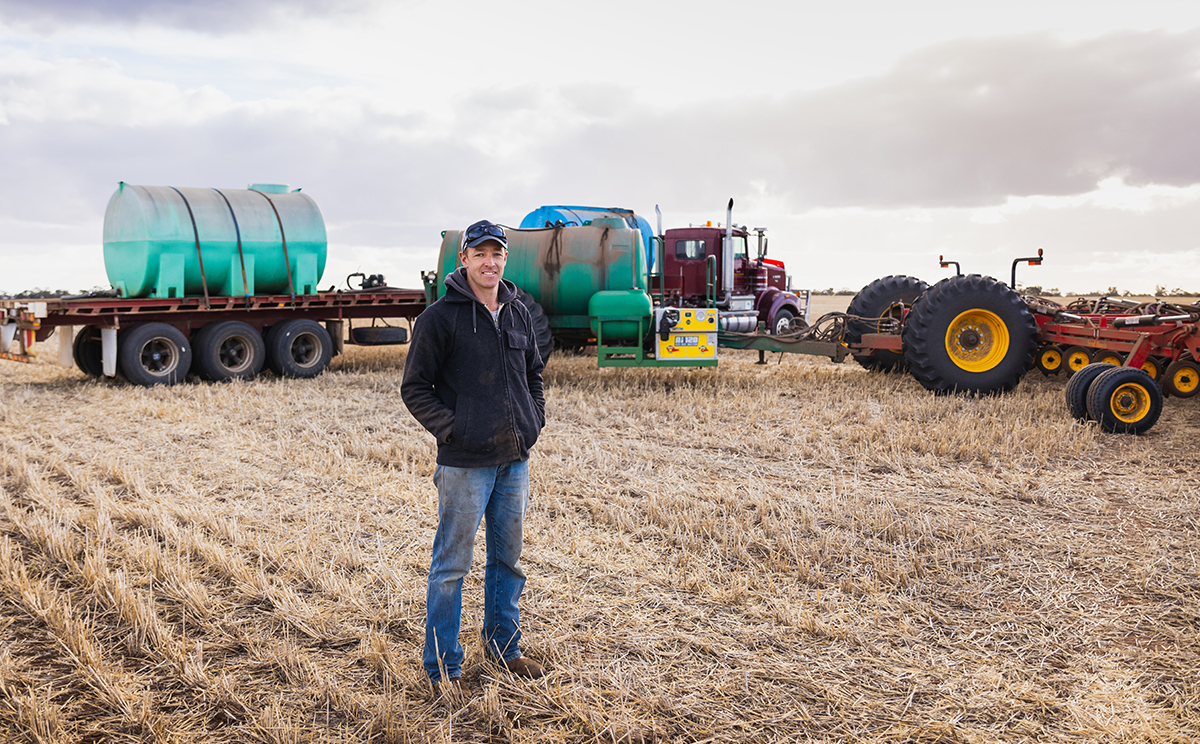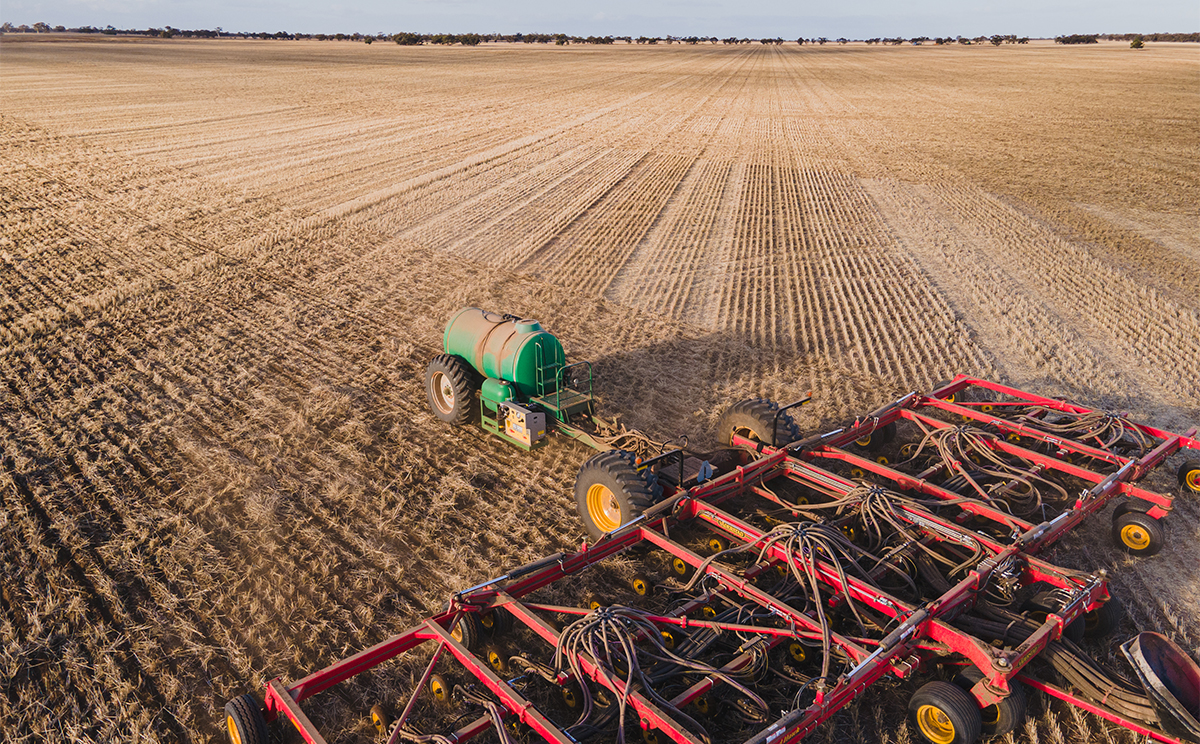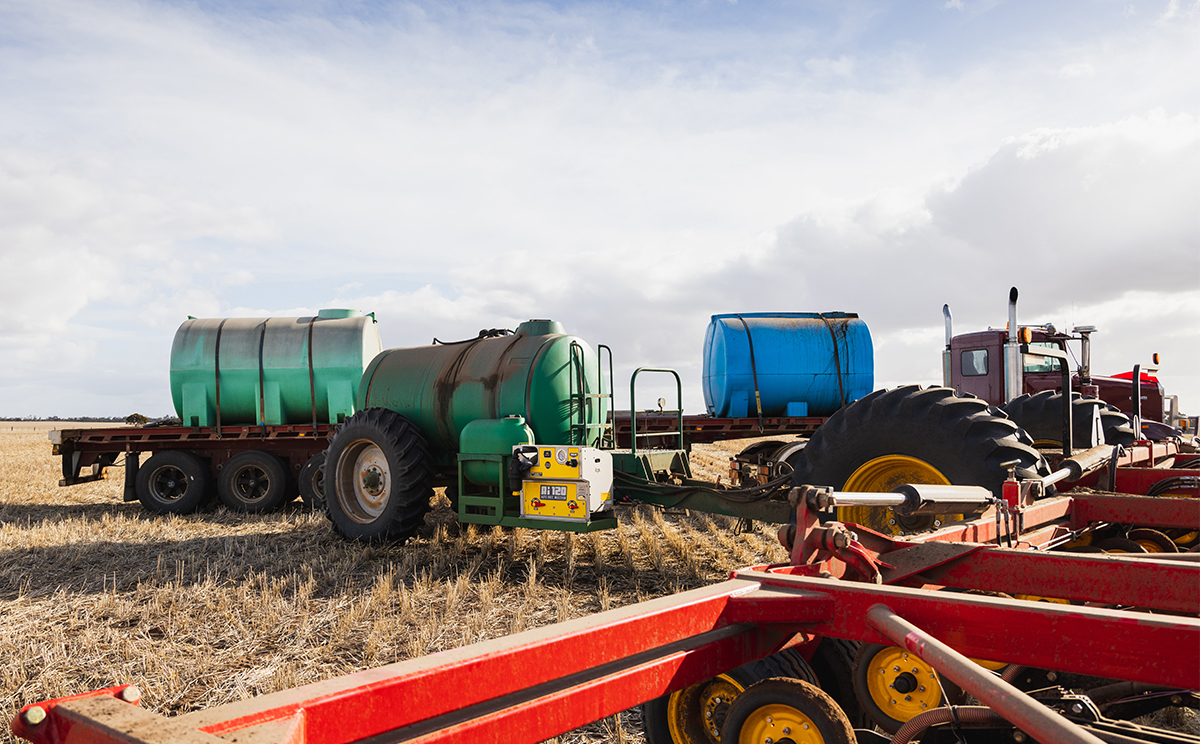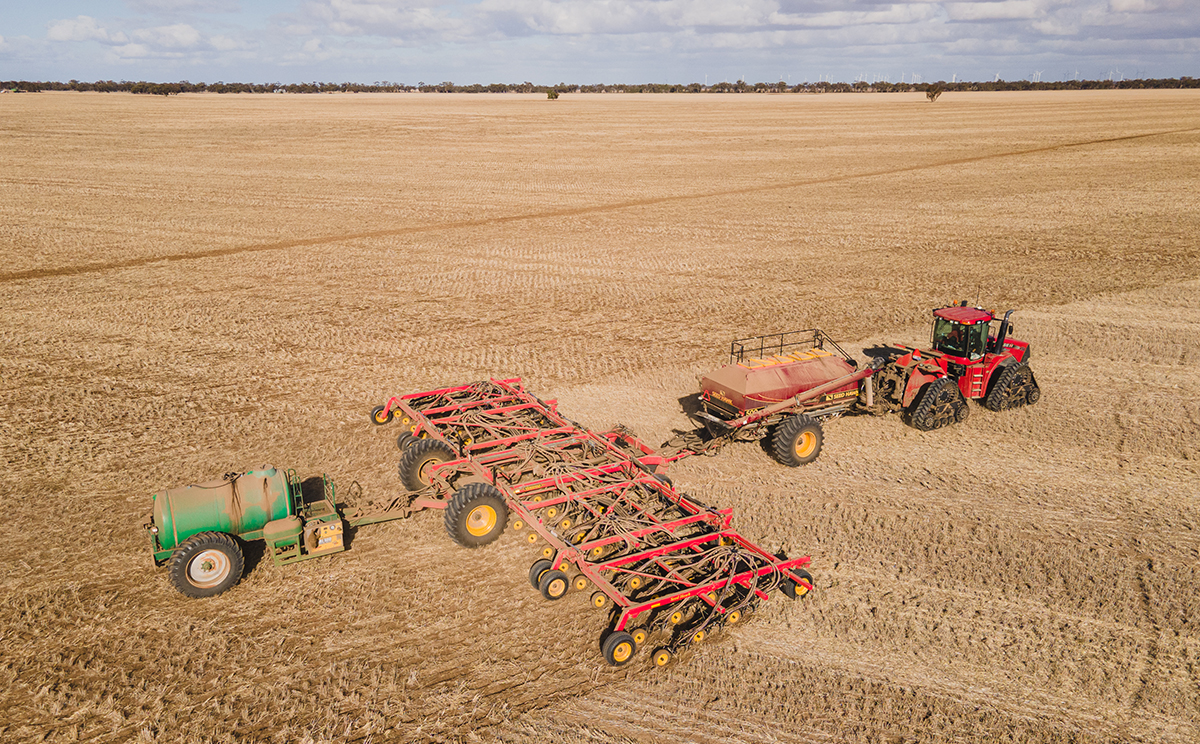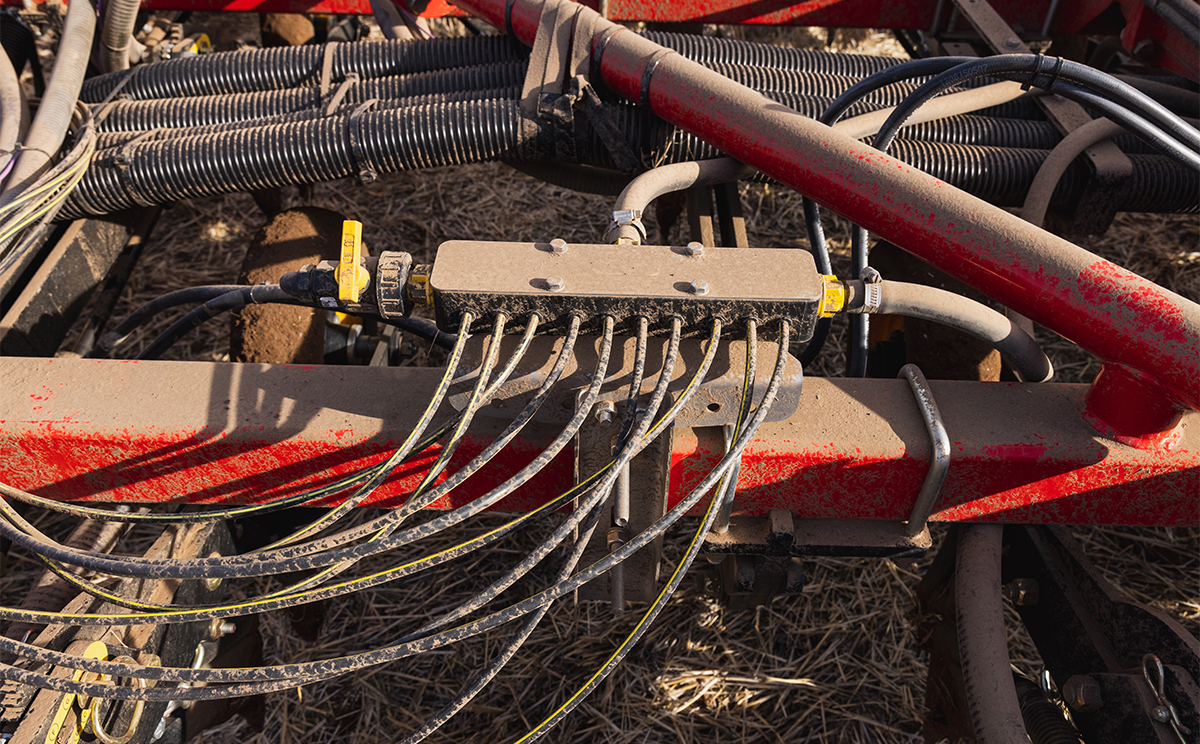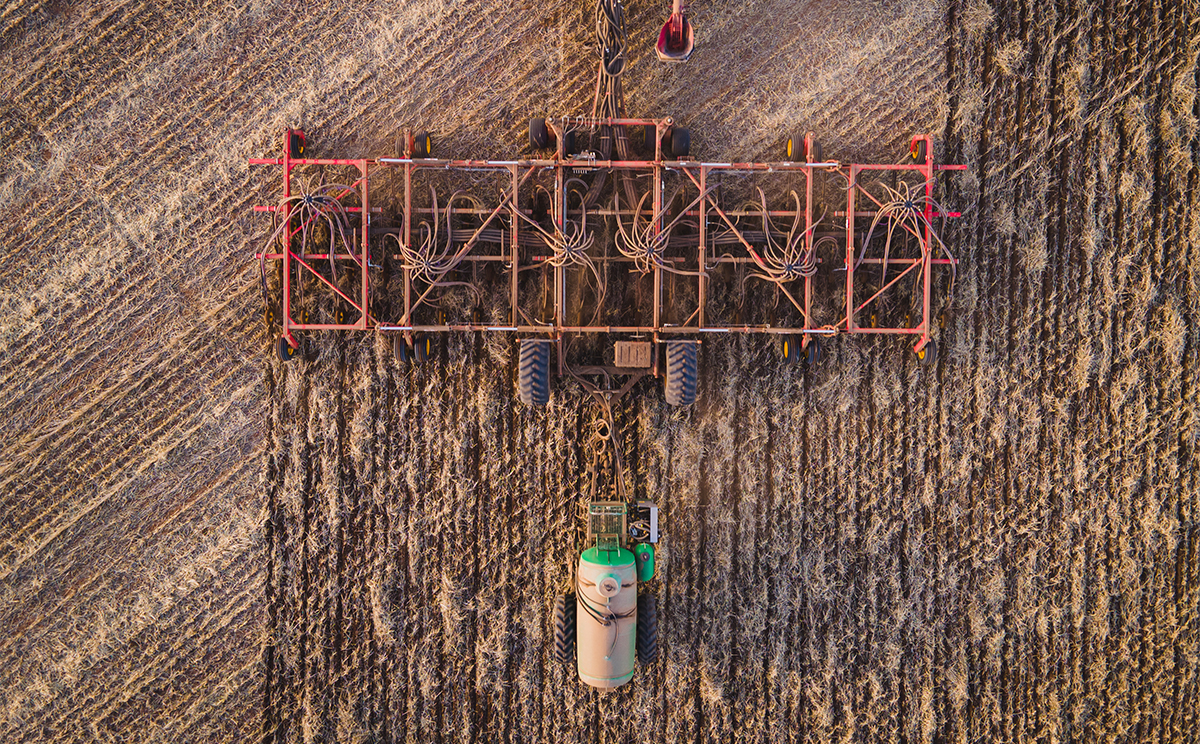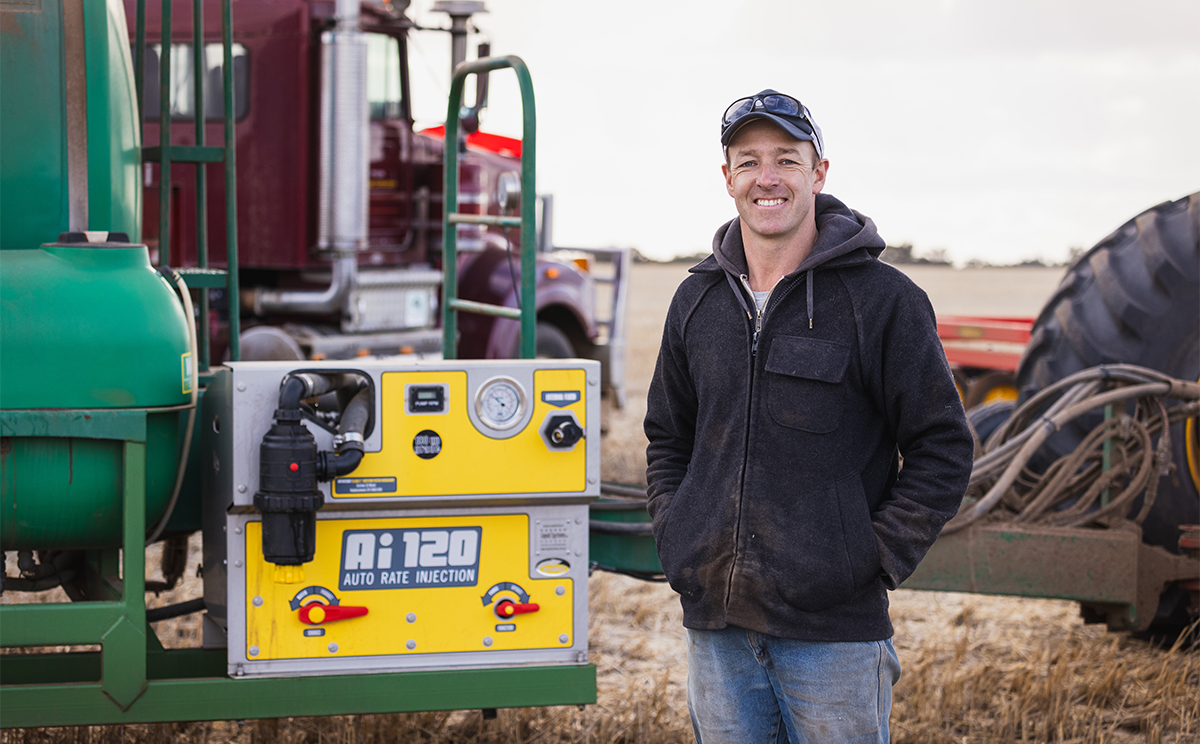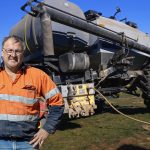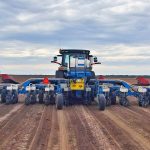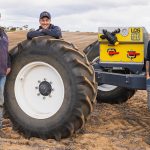Farm nutrition improvements flow from new liquid system
A focus on improving soil health has led to significant changes over the past two years for Shannon Byron and his family, farming at Kellalac, south of Warracknabeal in Victoria’s Wimmera.
Shannon farms with his wife Emma and parents Kim and Lynette Byron on ‘Kelvin Downs’ growing wheat, canola, lentils, chickpeas, barley, vetch and the occasional bean, lupin or pea crop, as well as running some sheep and cattle.
| ABOUT |
|---|
- WHO: Shannon and Emma Byron, with Kim and Lynette Byron
- WHERE: ‘Kelvin Downs’ at Kellalac, south of Warracknabeal, VIC
- CROP: 2,300 hectares of cereals, canola and legumes
- INPUTS:EASY N liquid nitrogen, MAP, humates, fulvates, trace elements and carbon
- EQUIPMENT: Liquid Systems (SA) – LQS-AI120-180UPG Module – 3 Manifold Stacker kit with 72 friction tube outlets
| KEY OUTCOMES |
|---|
- Setting up a liquid system has allowed them to shift to crop nutrition products and additives that meet their soil health goals..
- Sowing with liquids is more accurate, efficient and timely.
- EASY N has replaced urea as the preferred nitrogen source.
Over the past couple of years, the family has changed the way they farm to address long-term soil degradation and make the operation more manageable. They have reduced the area under crop from 3,000 hectares down to 2,300 hectares, invested in new machinery and switched to liquid fertilisers.
Shannon explained they are focusing more than ever on timely and effective crop management, especially at sowing. They’ve gone from a system of broadcasting urea in front of the seeder and applying seed and starter fertiliser together, to a much more carefully planned and placed nutrition program. Much of that improvement is thanks to their 2020 purchase of a new Liquid Systems (SA) LQS series pump and control module, set up with a 5,400 litre trail-behind liquid tank.
Having the Liquid Systems kit enabled us to better place our inputs down the tube, which is helping improve crop growth from the start, as well as improving our soil health
“Having the Liquid Systems kit enabled us to better place our inputs down the tube, which is helping improve crop growth from the start, as well as improving our soil health.” he said.
They apply 30 to 40 L/ha of EASY N, mixed with humates, fulvates, trace elements and carbon in-furrow at sowing. They can also add inoculants to the liquid mix for their legumes and pulses.
EASY N is a urea ammonium nitrate product with 42.5% nitrogen w/v. “One of the best parts of EASY N is that nearly everything’s compatible with it,” Shannon said. “It’s also very efficient, with the nitrogen readily available and right next to the crop.”
This year, they also upgraded to a new 18 metre parallelogram style tyne seeder which is giving them greater control over seeding depth and separation of the seed and fertiliser rows. Now the liquid nitrogen is placed on top of 50 kg/ha of MAP in the fertiliser row which sits 2.5 cm to the side and below the seed line.
“This puts the nutrients right in the root zone where the plant needs them and gives us some breathing space to assess crop emergence before we consider applying more nitrogen after Z14,” he said. The efficiency of their new sowing system has also allowed them to plant with one machine rather than two, freeing up labour and simplifying the operation.
“When we changed to 18 metres with our airseeder unit, we came back to one tractor, one airseeder bar and bin and one liquid cart instead of running two units with two operators,” he said.
“This frees up labour for other jobs, halves the chance of mechanical breakdowns and means all the crops are sown to the right depth with the right nutrition.”
Shannon said setting up the new liquid module with rate controller was easy, with the help of Liquid Systems (SA).
“It was an absolute breeze to put together,” he said. “The unit itself was already assembled, everything was labelled and the instructions were easy to understand when it came to plumbing up the bar and airseeder.”
“We wanted to stay below 2.5 bar head pressure and they were able to tell us exactly the length of the friction tube needed to do that given our set up, and the volumes and specific gravity of the product we were using.”
Shannon said it has proven to be a robust and easy to use system. “We just punch in the rate, flick the master switch on and the liquid system does the rest,” he said.
Once sowing is finished, the Byrons move on to inspecting, monitoring and managing their crops through the season. This too has changed. They are doing more soil and plant tissue testing than ever before, using less nitrogen and are generally slower to load up the sprayer with insecticides or fungicides. Inputs are only applied in response to significant pest or disease outbreaks that can’t be handled by beneficial insects or overcome through good crop health.
With nitrogen management, for example, they have gone from applying up to 350 kg/ha of urea over a season to more like 120 L/ha of EASY N.
“What would happen in the past is we would put out 100 kg/ha of urea ahead of a rain forecast and only end up getting one or two millimetres, which is not enough to do anything, so we’d lose it,” he said.
“When it did rain, the crop would green up like anything, but it was all above ground – it didn’t have the root system to support it – so that if it was a dry finish, we’d be cutting hay.”
With a 380 mm growing season rainfall, Shannon says taking a more moderate approach to nitrogen rates, with a more efficient nitrogen product is working well for them so far.
EASY N is also applied in-crop as needed using a boom spray with flat fan nozzles in a tank mix with fulvic acid and water. “EASY N is so much more efficient. I would never go back to granular urea,” he said.
In their first season with the new liquid system at sowing, Shannon said the crops really took off, and with modest nitrogen rates through the growing season, yielded not far off the district average.
They are looking forward to more good results this season, with sowing finished in early June and strong emergence so far.
Early Sept 21 crop shots: Lentils on worst compacted soil pre canopy closure and just about to flower.
It’s great, being able to buffer phosphorus with carbon & also feed & introduce biology down the liquid tube has been invaluable.
Get a Quote
"*" indicates required fields

